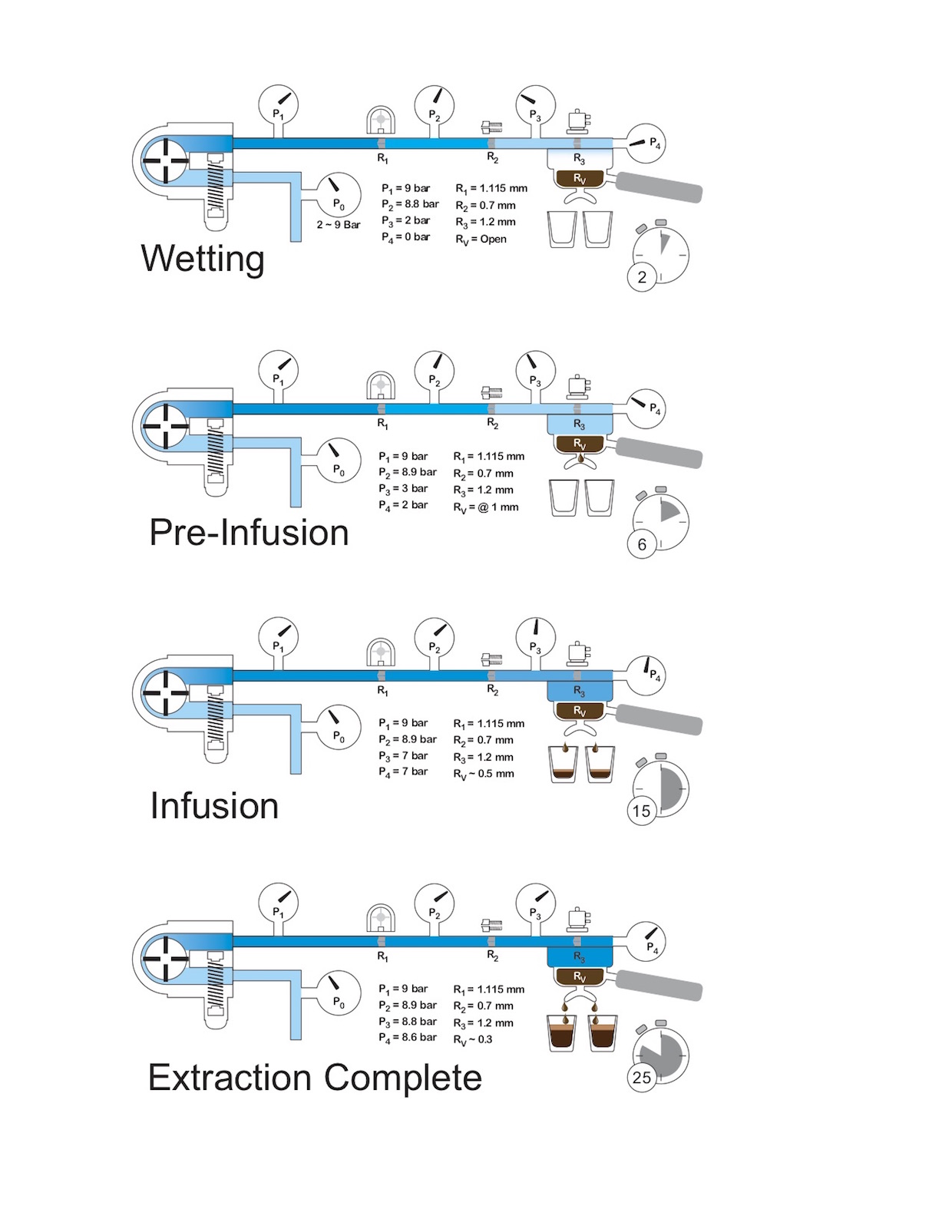
Those 15 BAR espresso machines have enough power to initiate a brewing with 10-11 BARs of pressure thus yielding delicious coffee. Those 15 BAR espresso machines have enough power to initiate a brewing with 10-11 BARs of pressure thus yielding delicious coffee.

For the most part 7-9 bars of pressure is considered the sweet spot for pump driven espresso machines which use a pump to force water through the grounds.
How much pressure should an espresso machine have. How much pressure should an espresso machine have. The Key to a Good Espresso. Heat and Pressure Espresso Gusto.
How many bar pressure for an espresso machine. Around 9 bar is the best pressure rate for extracting espresso but because most home espresso machines use so called vibratory pumps instead of professional. For the most part 7-9 bars of pressure is considered the sweet spot for pump driven espresso machines which use a pump to force water through the grounds.
Pump driven machines as well as rotary ones are known to be much better than those that brew using steam known as steam driven. Espresso machines look cool and they have a unique knack for making a. To generate this pressure and move water into contact with our puck of grounds.
For many not having to refill a reservoir can be a huge perk particularly if you aim. How to Use an Espresso Machine in. Around 9 bar is the best pressure rate for extracting espresso but because most home espresso machines use so called vibratory pumps instead of professional grade rotary pumps they need more than that to actually have that magical number when the water reaches the grounds.
Alternately making espresso requires the buildup of pressure to force 15-2 ounces of not-quite-boiling water through tightly packed grounds extruding a denser more concentrated version of the tasty ambrosia eliminating with crema or foam on top. The truth is that with cheaper espresso machines they tend to lose a lot of pressure between the pump and the group head. So while they might start off at 15 bars you will still be brewing at around 9 bars 3.
And in fact a good-quality espresso machine features a valve to prevent the machine from brewing at more than 9 bars 4. Brewing at 9 Bars of pressure should provide the the best results in optimal extraction percentage. Some machines do not have a gauge to show you how much pressure is exerted.
To determine whether you are at the right pressure with your machine refer to the First Rule. A double shot of espresso 2 to 3 ounces in 25 to 30 seconds. All of these machines have a safety valve that releases pressure if it begins to exceed a certain amount of.
Only problem the pressure is too damn high. First of all the temperature of the water flowing through the group head is nicely around 92C and the coffee is pressed with 10kg measured with a bathroom scales. Water flows too fast through the coffee resulting in a very thin cream.
A fine grind is needed for espresso and the ideal pressure is nine bars. This in turn dictates a time of 2530 seconds. Of course there are also many other aspects that are key to great espresso.
The tamp the coffee roast date the coffee dose bean density equipment quality portafilter basket size water hardness room temperature. This is super helpful for me because I have so much trouble with this. I have a machine at home.
Its not a fancy expensive one but its a pump model and sometimes it makes a great espresso. I do have this trouble with tamping with the right amount of force. Hadnt thought to use a scale to approximate the pressure.
I read somewhere that 15 bar is enough and any pressure higher than that doesnt make any difference. The standard pressure is 15 bar for home machines and 9 bar for professional machines. If so why are there machines with higher pressure 16 19 20 21 bar and why do these machines.
As most baristas and espresso lovers know professional machines are set to brew coffee at 9-bar of pressure while home or semi-professional machines are often quoted to have around 15-bar. Home machines use cheaper pumps and the pressure settings are pre-programmed for the homemaker. It might not be as precise but it should do the job.
Many espresso machines rarely if ever use more than 11 BARs of pressure. Many budget espresso machines will only have the recommended 9 BARs of pressure. Better espresso machines will have 15 BARs.
Those 15 BAR espresso machines have enough power to initiate a brewing with 10-11 BARs of pressure thus yielding delicious coffee. Its well known in every barista course or book that 9 bars is the perfect pressure for producing an espresso. So it is practically the ideal pressure for espresso machines since the machine was invented.
It was discovered that at this level of pressure the extraction has the perfect taste but can fluctuate between 8 and 10 bars. How a Pressurestat Works. One function of an espresso machine is to deliver water at a predetermined temperature to the coffee or at least to deliver it within an acceptable range.
The trick is for the manufacturer to find a way to do that. Some do it quite well and others not so much. The amount of pressure applied should be as small as possible without sacrificing any of the above.
Repetitive strain injuries are too common amongst Baristas so aiming for the lightest pressure that works is key. You want to control the flow rate of your espresso by adjusting grind size not tamping pressure.